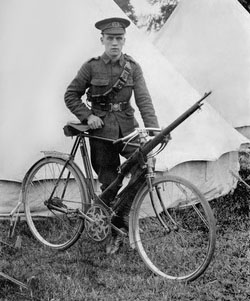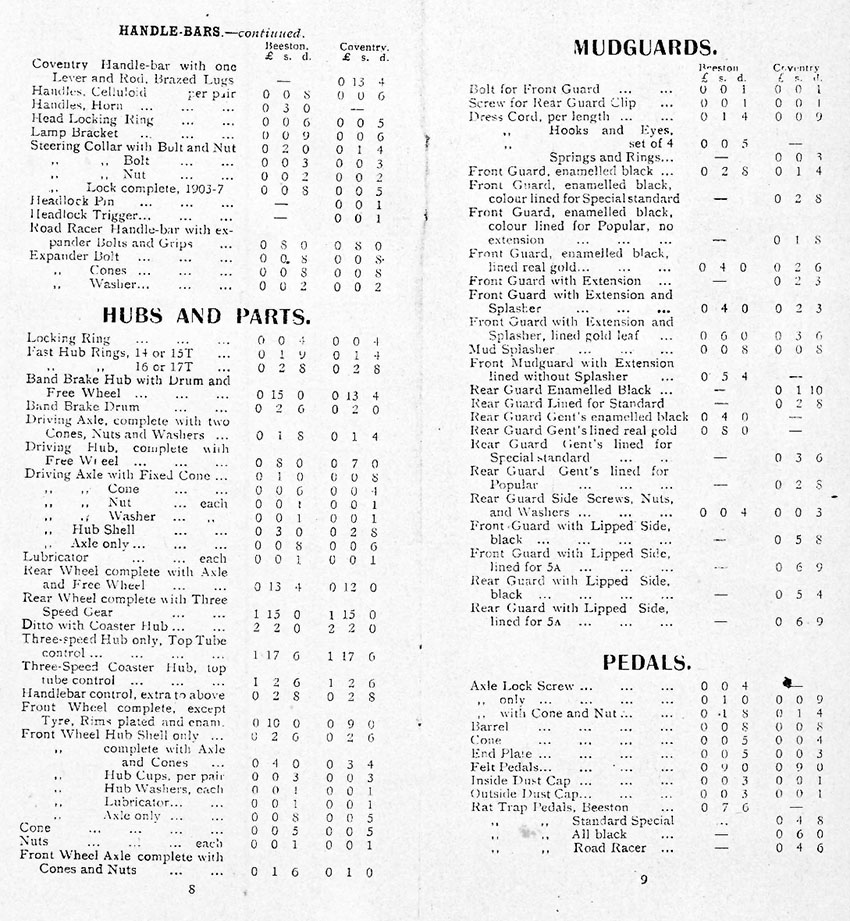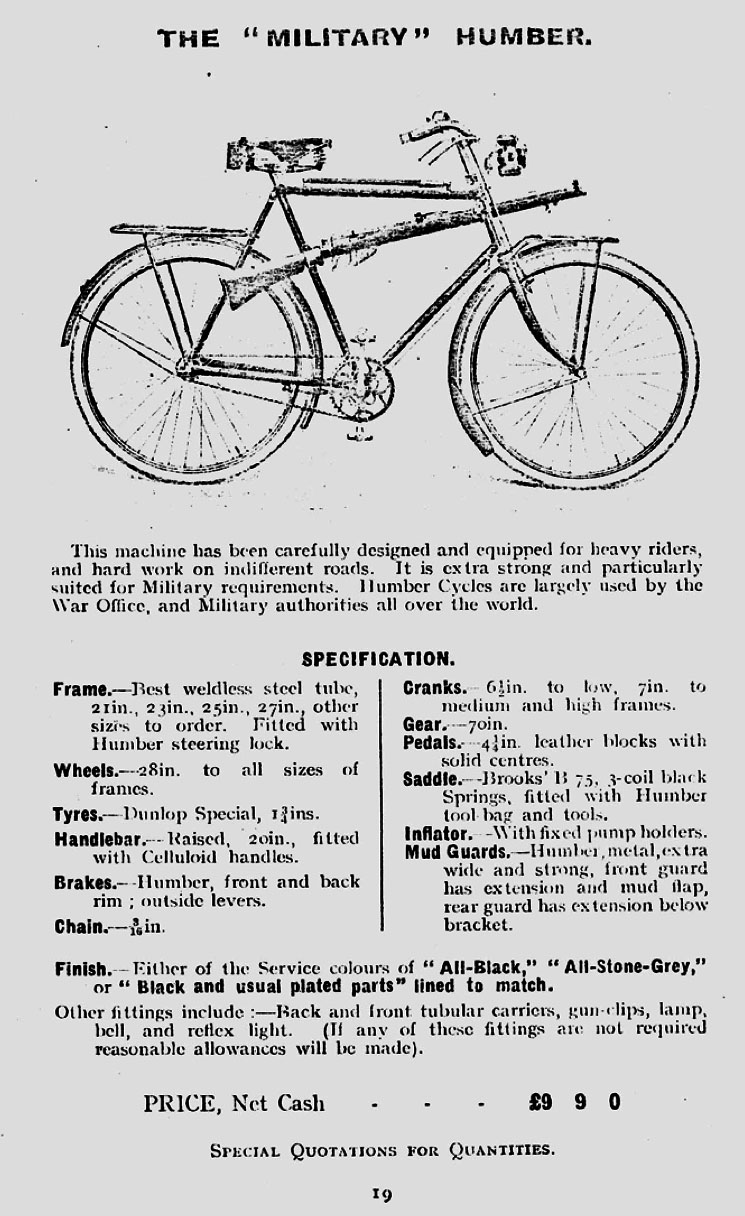Besides shooting, the other great qualification of the cyclist-soldier is good riding. And here, let me warn the new hand against changing when he enlists from the mount to which he is accustomed. A machine must be strong, for military work, but there is no reason why it should be heavy. Why do so many men ride great, heavy, tall machines with upturned handlebars and an impossible position as soon as they get a rifle hitched to their frames? The soldier’s cycle should be a 22″ framed machine with 26″ wheels, light roadster tyres, and adjusted for a semi-racing position suitable to the hard riding in unfavourable conditions which so often come the way of the military cyclist, and which can be mounted by striding over the saddle from the ground. Such a machine is lighter, stronger than a tall roadster and much easier to carry on the shoulder over streams and rough ground when necessary. Our Regular cyclists are now being provided with folding machines which can be carried on the back, on the lines of the French Army, but there is no necessity to go to this length of portability in the case of Volunteers on home defence service.
– Cycling Magazine, 22nd April, 1915
The photo below shows John Herbert (Jack) Radley, from Hough Green, Widnes, Cheshire, who served for three years during the build up to the War as a private with the Army Cyclist Corps. His civilian Humber bicycle is fitted with rifle clips and is a Coventry-made Popular like the example featured here.*


1911 ‘Popular’ Humber Gentlemen’s Free-Wheel Light Roadster
Model No 13
ww1 Military Despatch Bicycle
24″ Frame
28″ Wheels
(Now sold)

This ‘Popular’ Humber does not have the strengthened frame of ‘The Military Humber’ or ‘The Special Humber Roadster.’ It was not made to carry extra accessories or soldiers with full kit. The ‘Light Roadster’ is ideally suited for cycle despatch duties, being a lightweight machine unencumbered by accessories that can be ridden fast to deliver messages.
A despatch rider would be more likely to carry a pistol than a rifle. Whereas cyclist patrols would ambush enemy soldiers where possible, and then promptly make their escape, a despatch rider would avoid engaging with enemy, his mission instead being focussed on delivering his messages.
The ‘Popular’ of 1911 was the final Humber model to retain the older style of front mudguard, i.e. without an extension. The 1911 catalogue introduced the mudguard extension that year, and other models were fitted with it.
The handlebars and front fork of this ‘Popular’ are nickelled, which give it a handsome appearance.






HUMBER: THE ROYAL CONNECTION

A major selling point for Humber was that the marque was favoured by King George V (pictured above, in 1911, receiving a letter from a postman). Of course, this was a fabulous marketing aid for the company, and the model became extremely popular both at home and (particularly) throughout the Commonwealth …as ordinary folk, riding a Humber, would be able to enjoy similar views and sensations as their ruling monarch.
George V (George Frederick Ernest Albert; 3 June 1865 to 20 January 1936) was King of the Great Britain and British Dominions, and Emperor of India, from 6 May 1910 until his death in 1936. In 1896 a Humber motorized tricycle was the only motorcycle to finish the London-Brighton Emancipation Day Run which celebrated the raising of the speed limit to 12 mph. In 1898, the Duke of York, later to be King George V, became the first royal to ride one.

Though other bicycle manufacturers had bicycle lines named ‘Royal’ and several of the top manufacturers supplied bicycles to the Royal Family – who were keen cyclists and had supported the cycle industry since its earliest days – Humber capitalized most on its Royal connection in its advertising campaigns.
The picture below, from 1905, was part of Humber’s advertising during the reign of King George’s predecessor, King Edward VII.














1911 HUMBER CATALOGUE
















HUMBER MILITARY BICYCLES

Humber had a long history of supplying military bicycles to both the British government and colonial administrations. The Dutch catalogue extract above is from 1893.
Below you can see ‘The Military Humber’ of 1915


For More Details of the
1915 THE MILITARY HUMBER
PLEASE CLICK HERE



* Photo of Jack Bradley thanks to – http://liverpoolremembrance.weebly.com/surnames-o-r.html














































